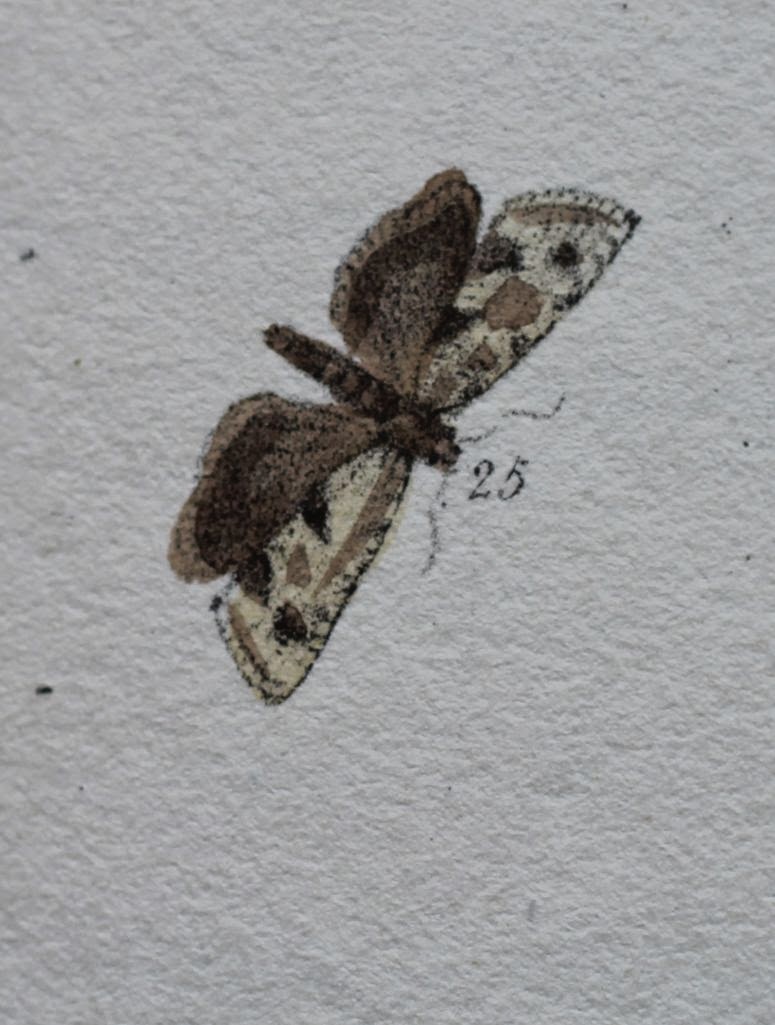7 June 2014
6 June 2014 – Two Constant Moons
 |
| (Epinotia bilunana) |
The rather sterile condition represented in this image is because this micro-moth chose the supports for the rain-shield to rest upon. The Latin name epinotia comes from the Greek for ‘upon the back’ and bilunana ‘two crescent moons’ – which aren’t immediately apparent. On the excellent Norfolk and Sussex moth sites, the common name is given as Crescent Bell. The number of species at the York Museums gardens was low on Friday morning but this moth was new to the gardens and new to me. If this lashing wind and rain disperses there might be one to be found in Coxwold.
 |
| (Philalcea bilunana) illustration |
Here is the image from Westwood /Humphreys, which took a while to find. The Latin name is different and the common name recorded in 1843 is ‘the hoary double crescent’.
Finally, here is Richard Lewington’s drawing of Epinotia bilunana from the Field Guide – to remind you that the exhibition of his prints and the opportunity to see specimen drawers from the Allis Collection, is only open at Shandy Hall for another couple of weeks.
Recent Moths
- Rise of the AI Naturalist
- Best Moths for a Haunted Abbey
- The Real and Fake Deaths of Moths
- The Colonizers of Yorkshire
- Glamour in the Dark: Two Newcomers Arrive at Shandy Hall
- 25 July 2023 – Collective Noun for Hawkmoths
- MOTH LIST to August 2023 with links
- 28 July 2023 – TRIPLE New Species Alert!
- 18 July 2023 – A Golden…Plusia!
- 13 July 2023 – Arts and Sciences
- 10 July 2023 – Rise of the Yellow Underwings
- 4 July 2023 – Cold-weather Catch







